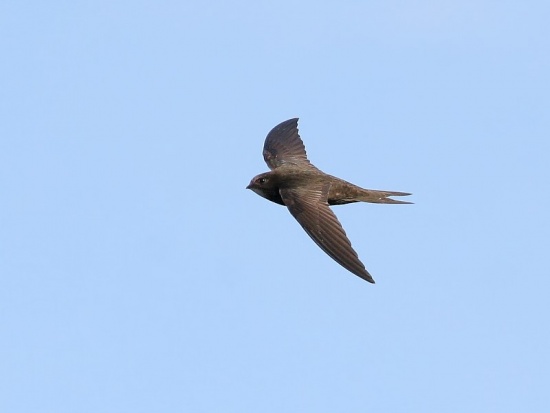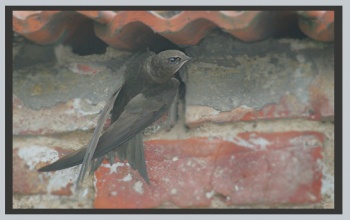(Video Link) |
(Moved vocalisation) |
||
| Line 24: | Line 24: | ||
====Breeding==== | ====Breeding==== | ||
Monogomous. They build their nests mainly in holes in buildings, but also crevices in cliffs and caves. They return to the same nest every year. | Monogomous. They build their nests mainly in holes in buildings, but also crevices in cliffs and caves. They return to the same nest every year. | ||
| + | ====Vocalisation==== | ||
| + | <flashmp3>Apus apus (song).mp3</flashmp3><br /> | ||
| + | ''[[Media:Apus apus (song).mp3|Listen in an external program]]'' | ||
==References== | ==References== | ||
#{{Ref-Clements6thDec10}}#[http://www.birdforum.net/showthread.php?t=40368 Birdforum thread] discussing id of common and pallid swifts | #{{Ref-Clements6thDec10}}#[http://www.birdforum.net/showthread.php?t=40368 Birdforum thread] discussing id of common and pallid swifts | ||
#[http://birdforum.net/showthread.php?p=2035870 and another Birdforum thread] with some amazing photos of both | #[http://birdforum.net/showthread.php?p=2035870 and another Birdforum thread] with some amazing photos of both | ||
{{ref}} | {{ref}} | ||
| − | |||
| − | |||
| − | |||
==External Links== | ==External Links== | ||
{{GSearch|Apus_apus}} | {{GSearch|Apus_apus}} | ||
Revision as of 14:47, 3 August 2011
- Apus apus
Identification
Common Swifts are 16-17 cm long and entirely blackish-brown except for a small white or pale grey patch on their chins which is not visible from a distance. They have a short forked tail and very long swept-back wings that resemble a crescent or a boomerang.
The inner part of the wing has front and back edge paralel to each other. Swallows and Martins have wings giving a more triangular impression.
Similar species
Pallid Swift (see references)
Distribution
By far the commonest swift of much of its range. Breeds from the Mediterranean north to northern Scotland, central Norway and the Kola Peninsula. Breeds across North-West Africa and in scattered localities in the Middle East. Has bred on Malta and recently discovered breeding in the Canary Islands. To the east range extends across Asia to northern China.
A summer visitor throughout range , wintering in sub-Saharan Africa and India. Autumn passage is mainly late July-September, rarely until late October, even November. Return movement reaches southern Europe in late March, further north in late April-May.
Taxonomy
Subspecies
There are 2 subspecies[1]
- A. a. apus:
- Western Palearctic east to Lake Baikal and Iran; winters to southern Africa
- A. a. pekinensis: paler and browner plumage with more extensive white throat patch
Habitat
Feeds chiefly over open country and often over water, commonly in urban areas, in lowlands or mountains.
Behaviour
Swifts spend most of their lives in the air, living on the insects they catch in their beaks. They drink and even sleep on the wing.
Breeding
Monogomous. They build their nests mainly in holes in buildings, but also crevices in cliffs and caves. They return to the same nest every year.
Vocalisation
<flashmp3>Apus apus (song).mp3</flashmp3>
Listen in an external program
References
- Clements, JF. 2010. The Clements Checklist of Birds of the World. 6th ed., with updates to December 2010. Ithaca: Cornell Univ. Press. ISBN 978-0801445019. Spreadsheet available at http://www.birds.cornell.edu/clementschecklist/Clements%206.5.xls/view
- Birdforum thread discussing id of common and pallid swifts
- and another Birdforum thread with some amazing photos of both
Recommended Citation
- BirdForum Opus contributors. (2025) Common Swift. In: BirdForum, the forum for wild birds and birding. Retrieved 9 May 2025 from https://www.birdforum.net/opus/Common_Swift
External Links





